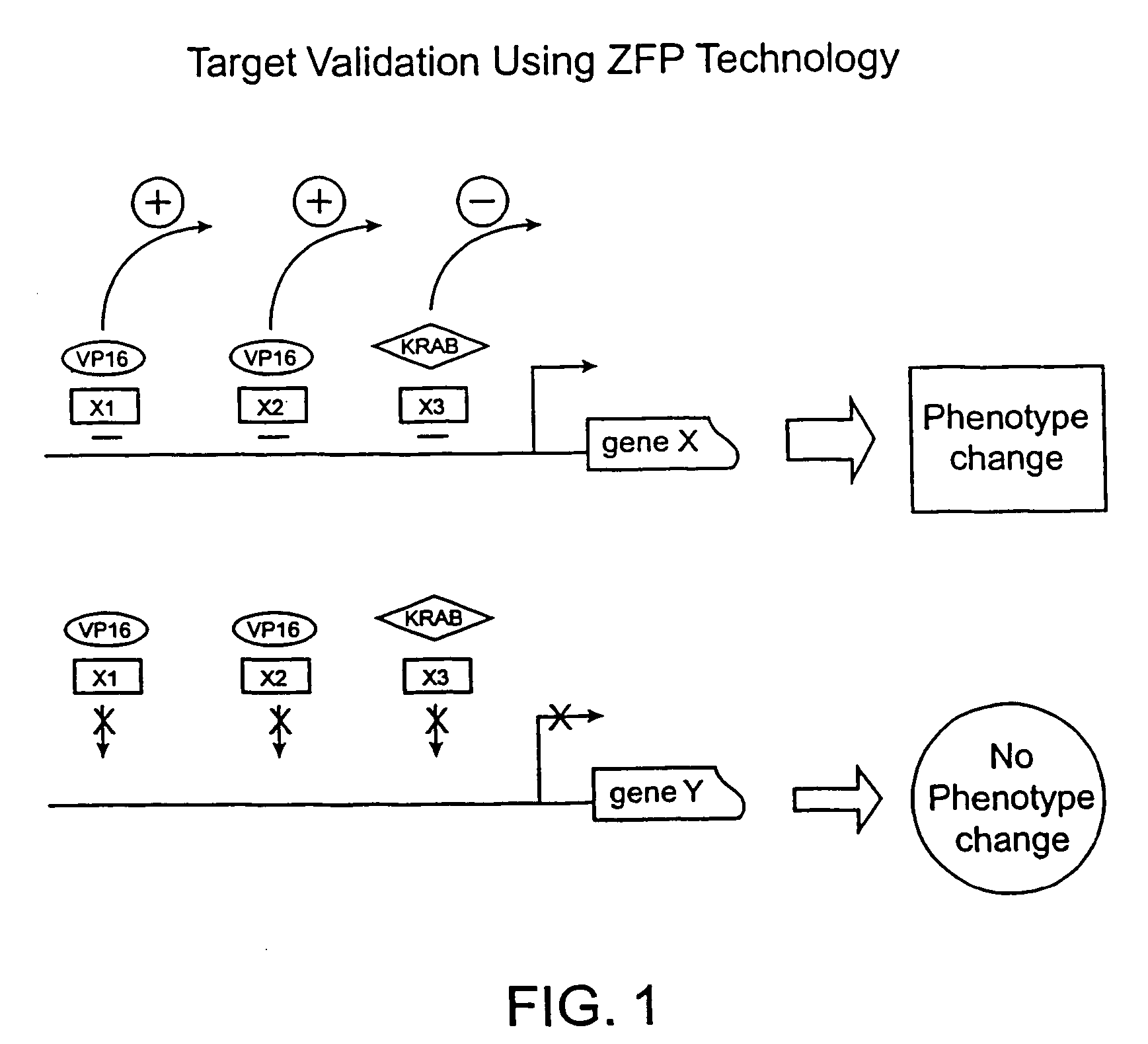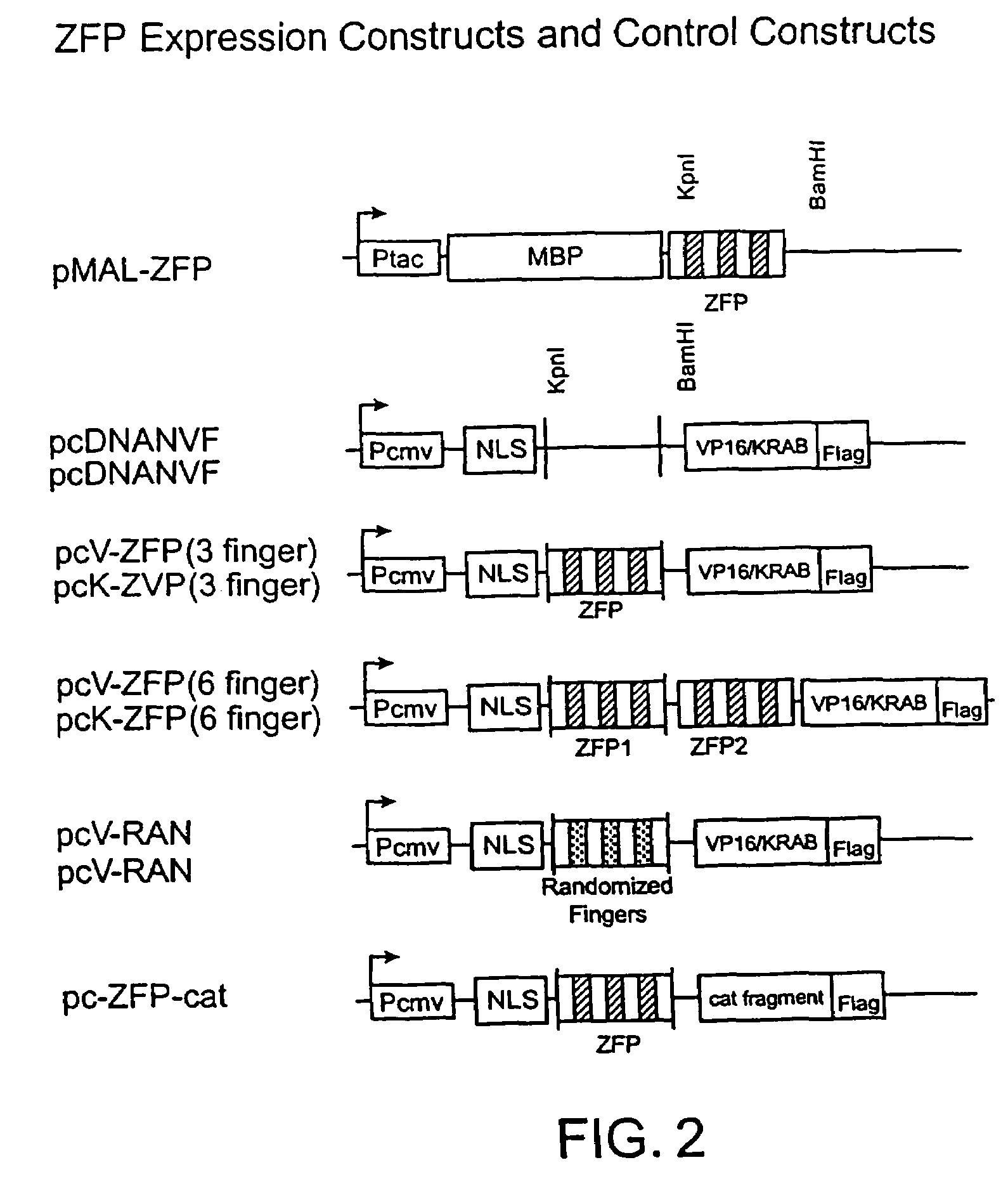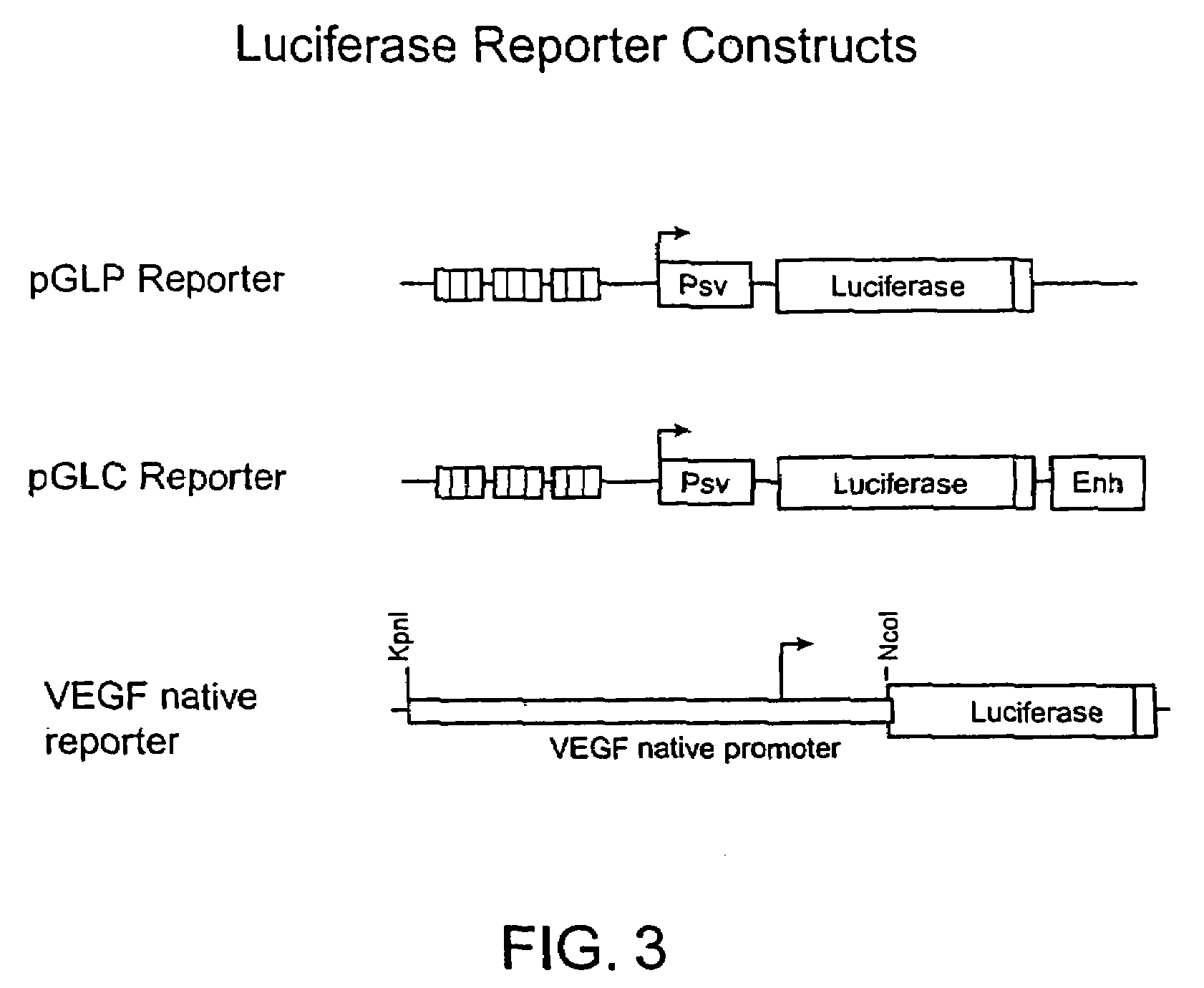Functional genomics using zinc finger proteins
a technology of functional genomics and zinc finger proteins, applied in the field of gene expression regulation using recombinant zinc finger proteins, can solve the problems of inability to achieve a “knockout” and the technical process of creating a “knockout” is laborious and demands immense monetary and technical resources, and achieves the effect of preventing gene activation and preventing repression of gene expression
- Summary
- Abstract
- Description
- Claims
- Application Information
AI Technical Summary
Benefits of technology
Problems solved by technology
Method used
Image
Examples
examples
[0206]The following examples are provided by way of illustration only and not by way of limitation. Those of skill in the art will readily recognize a variety of noncritical parameters that could be changed or modified to yield essentially similar results.
example i
Targeting Human VEGF Gene with Zinc Finger Proteins for Target Validation
[0207]An important consideration in target validation is to efficiently determine and accurately evaluate the relationship between a targeted gene and resulting phenotype. This example demonstrates the use of the zinc finger protein technology to validate a gene as a target for the development of therapeutic compounds that can regulate, e.g., expression of the gene or the function of the gene product. This process is based on the following simple assumptions (FIG. 1).
[0208]If a gene X is up-regulated by a ZFP-A1, which specifically targets at the X1 site, a phenotype Q is observed.
[0209]If the gene X is up-regulated by ZFP-A2, which specifically targets at a different site X2, the same phenotype Q should be observed.
[0210]If the gene X is down-regulated by ZFP-B1, which targets at the X3 site (X3 can be X1 or X2), a different phenotype Z should be observed.
[0211]If the ZFP-A1, ZFP-A2, or ZFP-B1 are used to targ...
example ii
Erythropoiesis Target Discovery
[0237]Mammalian erythropoiesis is regulated via stimulation of the erythroid progenitors by certain factor(s) that provide proliferation and differentiation signals. Hypoxia is a potent signal that induces the expression of genes controlling many physiologically relevant processes (Ratcliffe et al. J. Exp. Biol. 201:1153 (1998)). One of the processes is to “request” that certain tissues release a factor(s) for the production of additional red blood cells. This phenomenon can be detected by stimulating different cell lines and / or tissues with hypoxic conditions, sampling the culture supernatants, and testing for the stimulation of erythrocyte colony forming units from murine bone marrow cultures. Cell lines or tissues found to respond to hypoxia in this way likely express erythropoietic growth factors in a hypoxia inducible manner. The analysis of genes differentially expressed in such cells or tissues upon hypoxic treatment should lead to the identific...
PUM
| Property | Measurement | Unit |
|---|---|---|
| pH | aaaaa | aaaaa |
| volume | aaaaa | aaaaa |
| volume | aaaaa | aaaaa |
Abstract
Description
Claims
Application Information
 Login to View More
Login to View More - R&D
- Intellectual Property
- Life Sciences
- Materials
- Tech Scout
- Unparalleled Data Quality
- Higher Quality Content
- 60% Fewer Hallucinations
Browse by: Latest US Patents, China's latest patents, Technical Efficacy Thesaurus, Application Domain, Technology Topic, Popular Technical Reports.
© 2025 PatSnap. All rights reserved.Legal|Privacy policy|Modern Slavery Act Transparency Statement|Sitemap|About US| Contact US: help@patsnap.com



